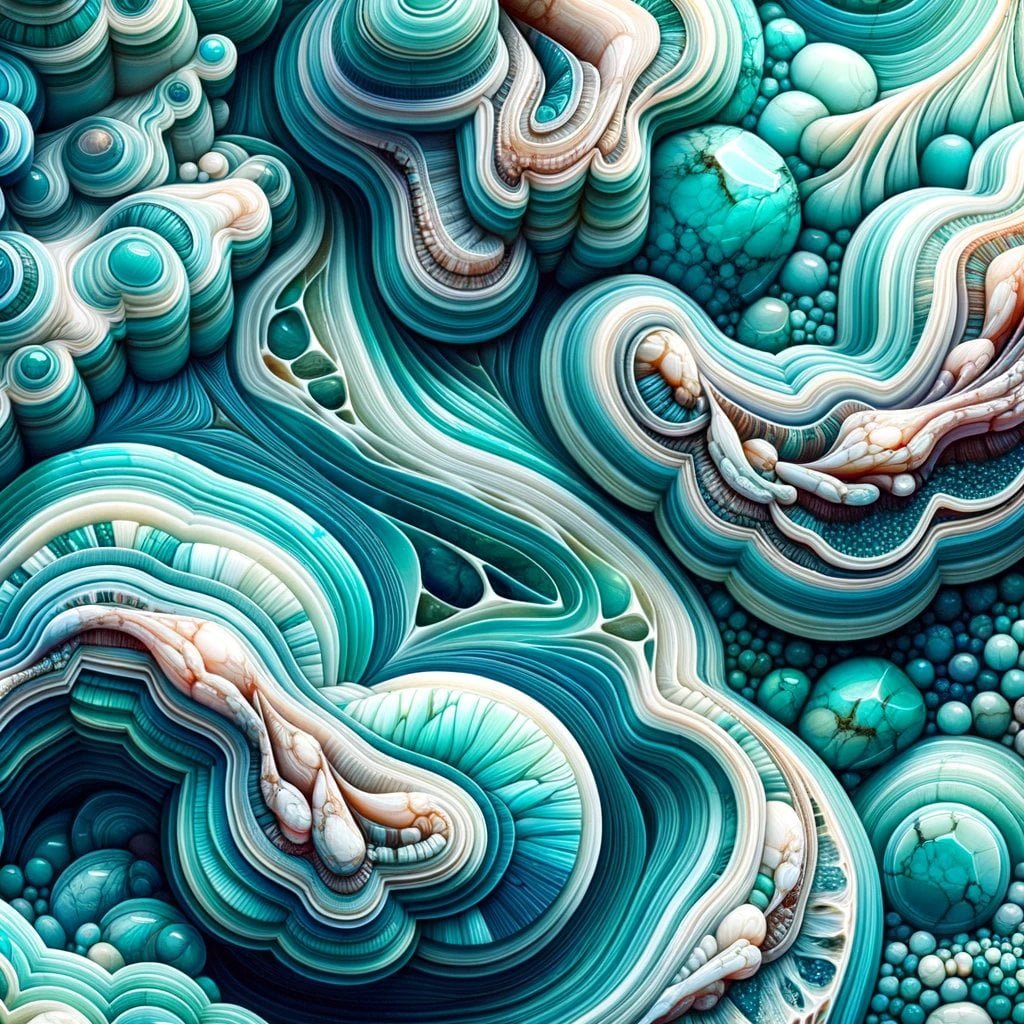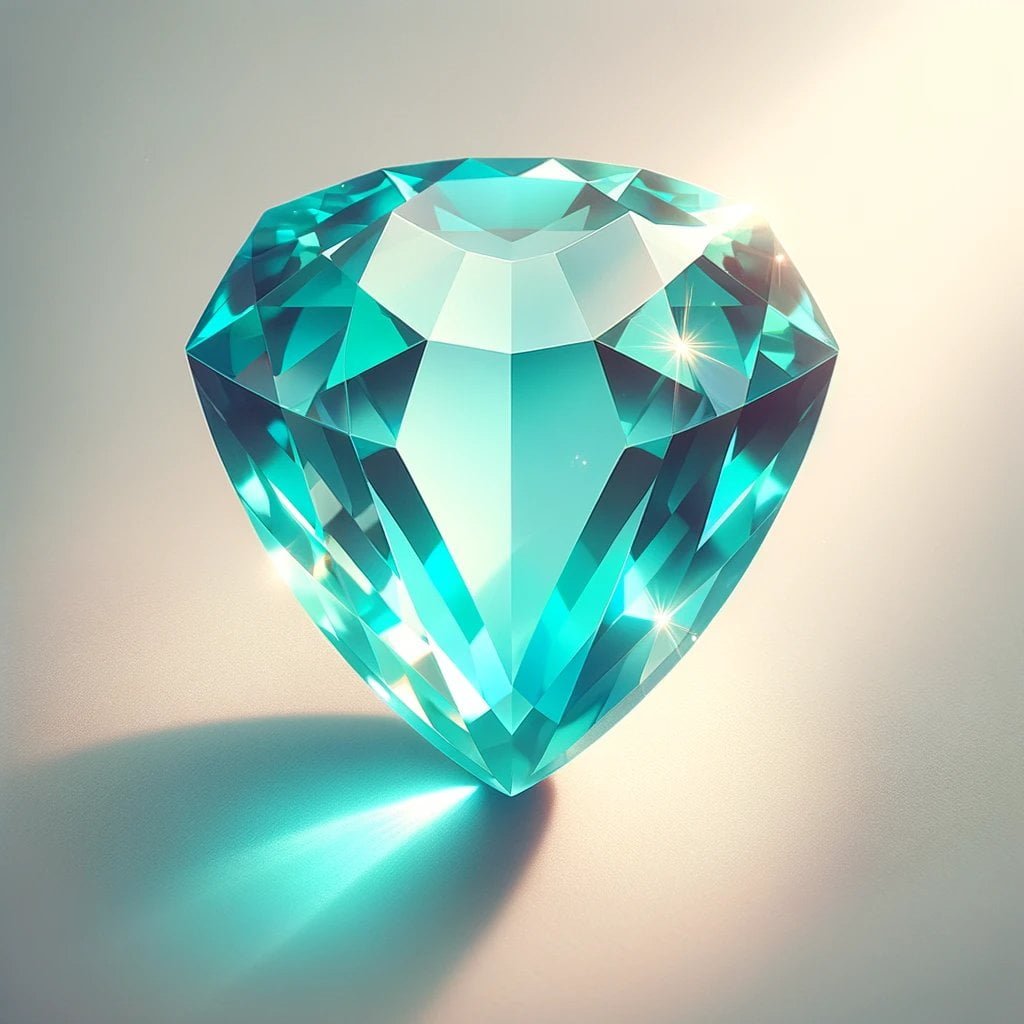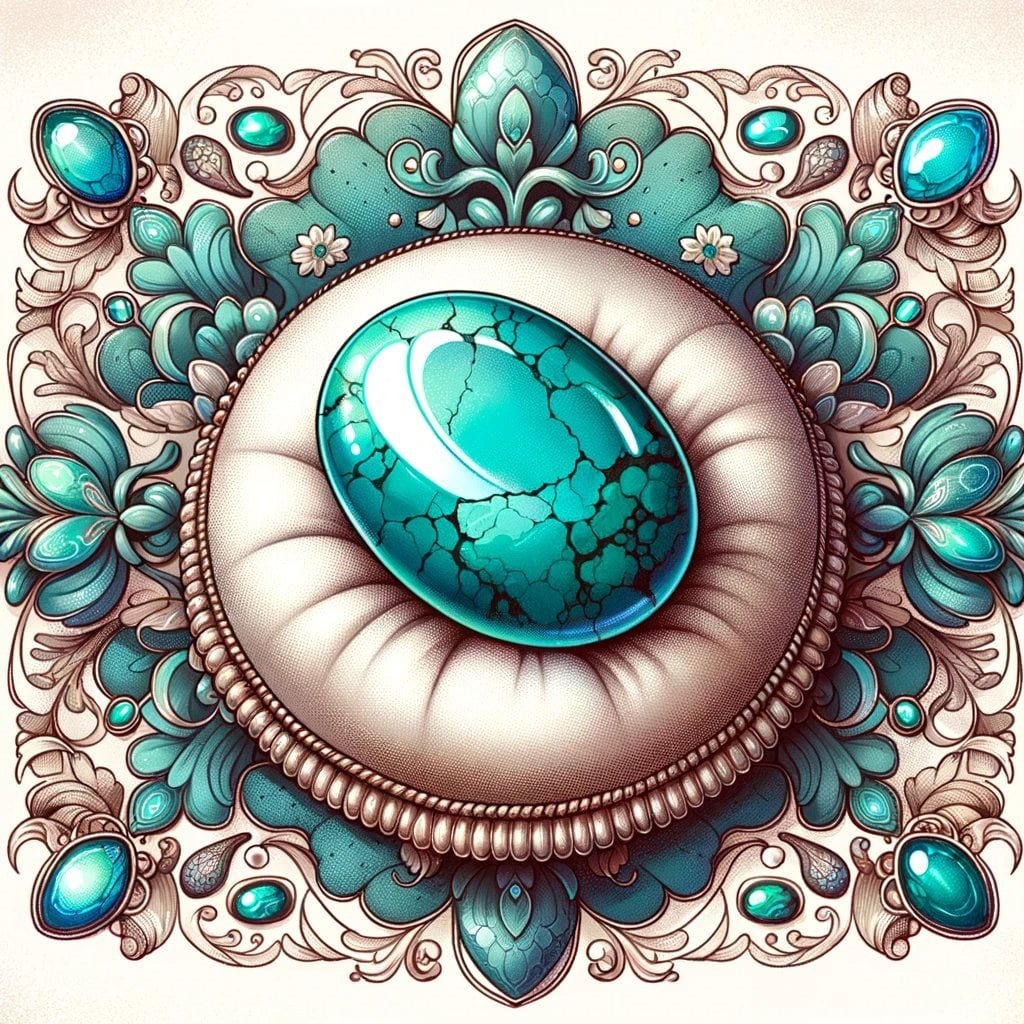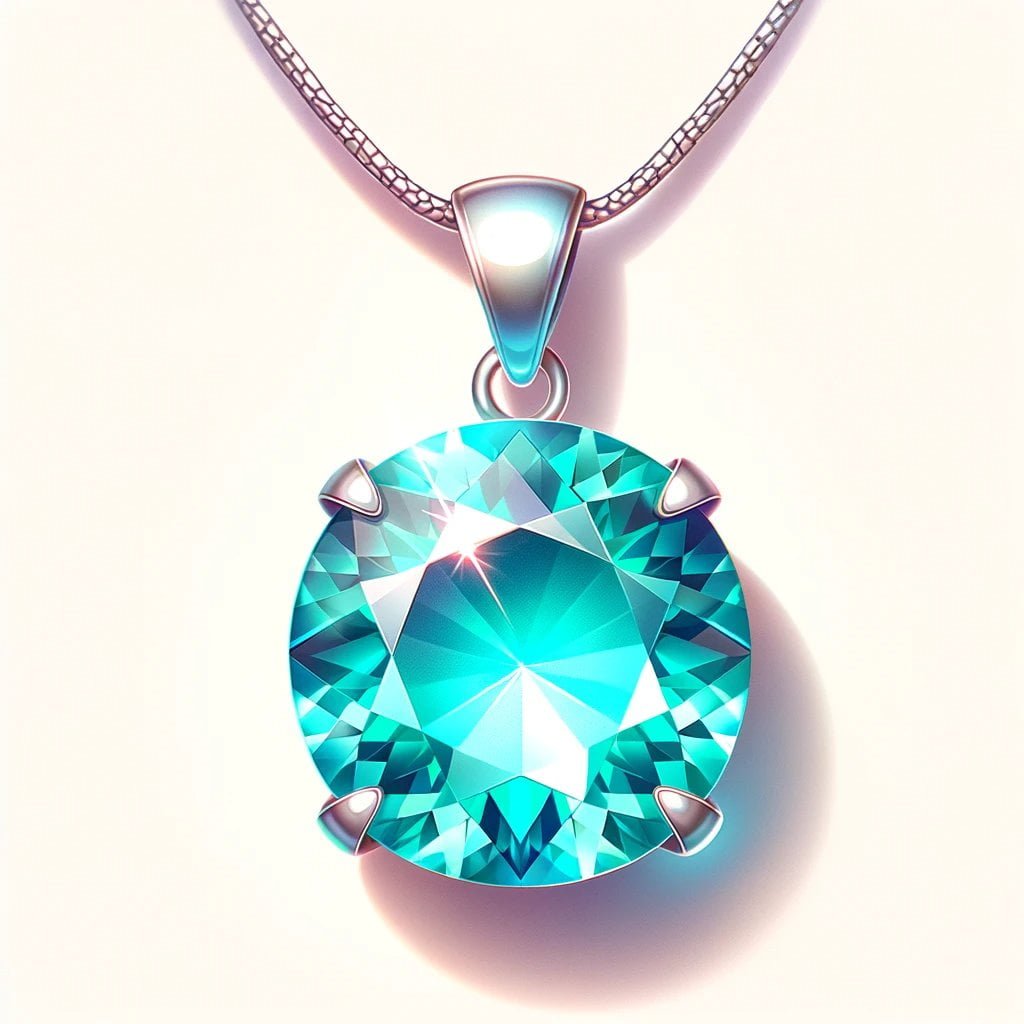Are you prepared to commence an enthralling exploration into the realm of turquoise? This article aims to explore the captivating qualities and intriguing secrets of the aquamarine birthstone, revealing its concealed allure. Prepare for an enthralling examination of the history, properties, symbolism, and current fashion trends in turquoise jewelry pertaining to this exquisite gemstone. With an unquenchable desire for one-of-a-kind and exquisite jewels and extensive experience as a jewelry blogger, I am delighted to serve as your guide throughout this enchanting journey. Therefore, secure your seatbelts and join me as we embark on an exploration into the mesmerizing qualities of turquoise.
Turquoise Birthstone
December’s designated birthstone, turquoise, possesses an intriguing historical background and an indisputable allure. Being among the most ancient gemstones in the world, its nomenclature originates from the French phrase “pierre tourques,” which translates to “Turkish stone.” It is postulated that the initial turquoise gemstones were unearthed in Turkey, a region renowned for the allure of their vivid colors to ancient civilizations.
Turquoise has been of historical and cultural significance to numerous civilizations. Native Americans frequently fashioned ceremonial jewelry from turquoise due to its esteemed spiritual attributes. The ancient Persians similarly esteemed the gemstone, perceiving it as an emblematic representation of plenty and safeguarding.
However, what distinguishes turquoise for individuals born in December? It is believed that those born in this month will experience prosperity and success. The vivid hues of blue and green elicit emotions of tranquility, equilibrium, and peace, rendering it an ideal embodiment of the frigid landscapes that permeate December.
In addition to its symbolic significance, turquoise is widely recognized for its therapeutic attributes. It has been employed as a talisman for the treatment of respiratory ailments, infections, melancholy, and anxiety for centuries. As well as facilitating communication, its calming energy is said to enhance emotional health.
Turquoise, designated as the December birthstone, occupies a revered position among individuals commemorating their birthdays during this festive period. Being a symbol of devotion and fidelity, its distinctive coloration is frequently bestowed as a token of appreciation for love and momentous events such as engagements. In addition to its aesthetic appeal, the gemstone is frequently utilized in the creation of exquisite jewelry.
In addition to turquoise, the months of December are also associated with tanzanite and zircon. Although every gem exhibits distinct characteristics, turquoise continues to captivate with its extensive historical background and undeniable allure.
An exploration of the intriguing annals of time reveals that turquoise has had a lasting impact on the global stage over the course of time. Containing a mesmerizing allure, this brilliant gemstone has adorned the ruling class in ancient Egyptian temples, establishing itself as one of the most ancient jewelry materials in the world. Its enduring nature and classic allure genuinely withstand the trials of time.
In summary, the December birthstone, turquoise, possesses an allure that transcends its aesthetically pleasing qualities. Due to its profound symbolism, medicinal properties, and extensive cultural heritage, it continues to enchant individuals who value its concealed allure. Whether bestowed as a present or embraced as an individual enchantment, turquoise continues to be a vibrant gemstone that bestows happiness and significance upon individuals born in December.
For centuries, turquoise has enthralled observers with its exquisite blue-green tones. Whether you possess a keen interest in the marvels of nature or are an ardent gemstone enthusiast, you will not be disappointed to discover some intriguing information regarding this enthralling stone. Discover an abundance of fascinating information regarding turquoise by clicking on this link, including its cultural significance in ancient civilizations and its distinctive formation process. Anticipate an intellectual journey as you uncover the mysteries surrounding this extraordinary gemstone.
Interesting facts about turquoise
The turquoise birthstone is a gemstone of exceptional allure and profound historical significance. Both contemporary jewelry devotees and ancient civilizations have been enthralled by its vivid hue. Curious as to the significance of the birthstone, turquoise? Insights into the mystic symbolism and profound significance of the birthstone turquoise can be obtained through investigation. Those with a curiosity for the extraordinary qualities and distinctive characteristics of the birthstone turquoise should explore this intriguing niche. Finally, individuals interested in discovering the profound influence this gemstone can exert on their lives should delve into the birthstone significance of turquoise. Allow the enigma of this singular gemstone to evoke a sense of awe and captivation within you. Therefore, investigate the birthstone turquoise’s properties, meaning, and significance in order to uncover the mysteries that lie concealed within this mesmerizing gem.
The December Birthstones: Tanzanite, Zircon, and Turquoise in Greater Detail
Zircon: An Everlasting Beauty
Zircon, a natural gemstone that is frequently misidentified as cubic zirconia, occupies an important position among the December birthstones. Zircon is the earliest rock ever discovered, estimated to be older than four billion years. This fact in and of itself is remarkable. Due to the fact that it is even older than diamonds, zircon possesses a wealth of historical significance.
Zircon is found in an extensive array of captivating hues, including but not limited to red, pink, orange, gray, purple, and blue. It is essential to note, however, that the blue hue frequently observed in jewelry stores is the outcome of heat treatment. Unheated, natural zircon is exceedingly rare and valuable, as exemplified by the magnificent natural golden zircon.
Zircon, which is 7.5 on the Mohs scale of hardness, is a resilient gemstone that finds application in a wide range of jewelry designs. It is mined in the Middle East, the United States, Canada, and Russia, among other locations. There are two possible origins for the name “zircon”: the Arabic word for vermillion or cinnabar, or the Persian term for gold-colored.
“Zircon, with its ancient origin and stunning hues, truly stands the test of time.”
An Anecdote of the Golden Age of Beauty
Turquoise, an additional captivating December birthstone, is historically recognized as one of the earliest gemstones extracted for jewelry purposes. The historical significance of the substance is manifested in its nomenclature, which originates from the French phrase “pierre tourques,” which translates to “Turkish stone.” The stone was discovered for the first time in Turkey.
This opaque gemstone exhibits an enthralling spectrum of hues, spanning from delicate Robin’s egg blue to more vibrant blues and even blue-green tones. Cabochons are frequently used to accentuate the exquisite hue of turquoise since the stone does not reflect light in the same way that faceted gemstones do. Due to its moderate hardness classification of 5 or 6 on the Mohs scale, handling this substance necessitates caution.
Throughout time, turquoise has been endowed with profound spiritual significance by a multitude of cultures. Due to its protective qualities, the Aztecs, Persians, and Egyptians held turquoise in high regard. In fact, this gemstone ornamented the tomb of King Tut. The Persians held the belief that turquoise served as a protective adornment against malevolence, whereas the Native Americans regarded it as such.
“Turquoise, a gemstone celebrated for centuries, offers a sense of peace, protection, and timeless charm.”
Tanzanite: A Contemporary Appeal
Tanzanite is the newest addition to the triumvirate of December birthstones. Until its distinctive characteristics were recognized, tanzanite, which was first discovered in 1967, was misidentified as sapphire. Tiffany & Co. obtained the global marketing rights for this exceptional gemstone and bestowed the appellation Tanzania in honor of its country of origin. From the moment it debuted on the market in 1968, Tanzanite’s popularity skyrocketed.
Upon extraction from the earth, tanzanite exhibits an initial brownish hue. However, through treatment, it acquires its mesmerizing dark blue and purplish tones, interspersed with red flashes. At a Mohs hardness range of 6.5 to 7, tanzanite possesses a relatively high degree of durability. Nevertheless, it possesses a characteristic that necessitates prudence: it cleaves effortlessly, signifying that it is susceptible to shattering when exposed to a powerful impact.
Because of its susceptibility to injury, tanzanite is most suitable for use in delicate jewelry designs, such as necklaces. Although devoid of historical significance and folklore, the captivating aesthetic and distinctiveness of tanzanite render it a gemstone that empowers individuals to forge their own narratives.
“With its mesmerizing colors and modern allure, tanzanite captivates the hearts of those who appreciate its undeniable beauty.”
In conclusion, there are three exceptional birthstones available to December babies: tanzanite, turquoise, and zircon. The color spectrum and ancient origins of zircon contribute to its enduring attractiveness. A sense of equilibrium and serenity is evoked by the spiritual significance and extensive historical background of turquoise. A recent discovery, tanzanite is mesmerizing in its vivid tints and contemporary allure. The allure and history of each gemstone enable December-born individuals to manifest their distinct personal style and sense of style.
As Jill Maurer puts it succinctly, “I adore each of them. Please share your thoughts in the following remarks section.
FAQ
What is the significance of turquoise in relation to the month of December as a birthstone?
Answer 1: The birthstone associated with the month of December is turquoise. Those born in this month are said to experience success, and it is frequently associated with prosperity and good fortune.
Question 2: May I inquire as to the source of the appellation “turquoise”?
Response 2: The term “turquoise” originates from the French phrase “pierre tourques,” which translates to “Turkish stone.” This is due to the belief that the initial turquoise gemstones were unearthed in Turkey.
Question 3: Does turquoise have any cultural connotations?
Answer 3: Turquoise is indeed mentioned numerous times in the mythologies of ancient Persians and Native Americans. It is significantly culturally significant in both societies and is frequently linked to notions of safeguarding, fortitude, and restoration.
Question 4: What are several therapeutic attributes attributed to turquoise?
Answer 4: For centuries, turquoise has been utilized for its therapeutic attributes. It is hypothesized to assist in the treatment of respiratory ailments, infection resolution, visual enhancement, and antidepressant or anxiety relief. Additionally, it has been observed to enhance general equilibrium and wellness.
Question 5: What are some suggestions for December-born individuals in terms of turquoise-themed gifts?
Response 5: Turquoise is an exceptional present for individuals born in December, particularly as a token of affection or to mark momentous events like engagements. For December birthdays, turquoise jewelry, including rings, earrings, and pendants, can serve as a beautiful and poignant present.
- Unlocking Francis Alexander Shields’ Finance Empire: A Comprehensive Biography - July 12, 2025
- Unveiling Francis Alexander Shields: A Business Legacy - July 12, 2025
- Francis Alexander Shields’ Business Career: A Comprehensive Overview - July 12, 2025


















